Key takeaways:
- Grassroots communication fosters personal connections through storytelling, empowering community members to share their experiences and engage in advocacy.
- Key elements for effective communication include clarity, active listening, and follow-up to build trust and maintain engagement.
- Social media serves as a powerful tool for outreach, facilitating real-time discussions and enabling the sharing of relatable content that sparks community support.
- Personal experiences in grassroots efforts highlight the impact of direct interaction and collaboration in driving change and fostering understanding within the community.
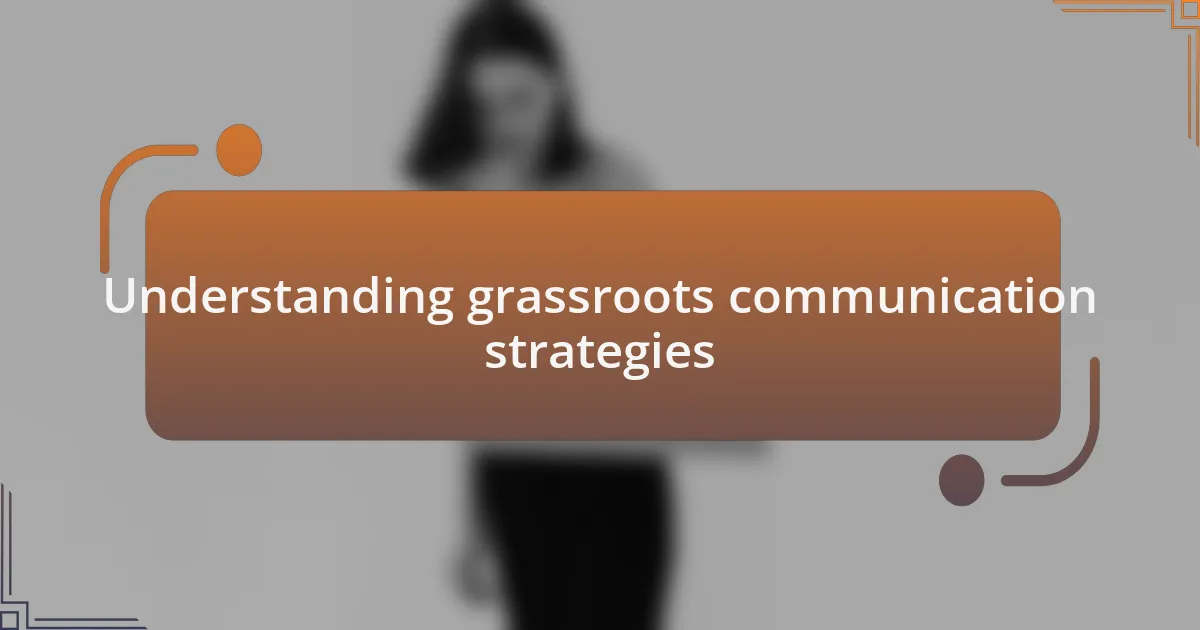
Understanding grassroots communication strategies
Grassroots communication strategies are about connecting with individuals on a personal level, often through storytelling. I remember attending a local rally where a mother bravely shared her story of unexpected pregnancy. Her narrative wasn’t just a tale; it was a powerful invitation for others to reconsider their views on life and family. When we share real experiences, we can evoke emotions that statistics alone simply cannot reach.
These strategies thrive on authenticity and community engagement, allowing voices from within the community to be front and center. Have you ever felt that strong sense of belonging when someone speaks your truth? That’s exactly what grassroots communication achieves—it fosters an environment where everyone feels empowered to share their stories. This approach not only strengthens our message but also creates a united front in advocacy.
Moreover, effective grassroots communication utilizes various channels, from social media to local gatherings, to spread messages organically. I’ve seen firsthand how a simple post can ignite conversations among friends that ripple outwards, sparking curiosity and support. It’s fascinating to consider: how can we leverage these personal connections to cultivate a deeper understanding of our cause? This method transforms passive observers into active participants, driving a more profound commitment to pro-life advocacy.
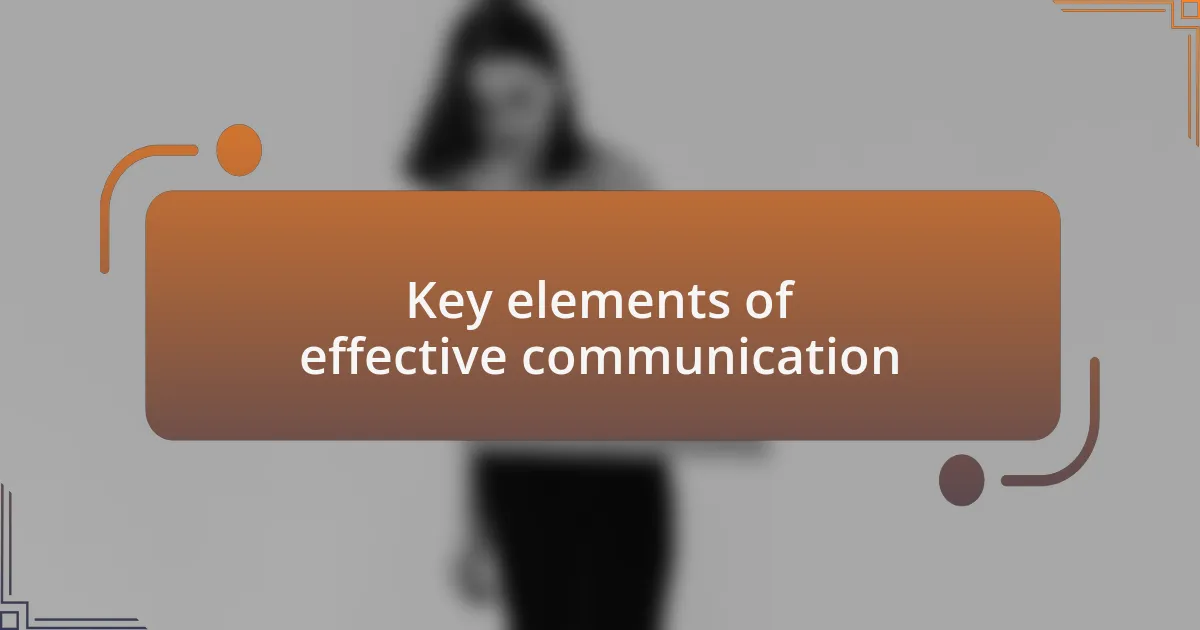
Key elements of effective communication
Effective communication in grassroots movements hinges on clarity and relatability. I once had a conversation with a volunteer who mentioned that their success stemmed from simplifying complex ideas into everyday language. Isn’t it interesting how breaking down barriers can open the door to more profound discussions? When people understand the essence of an idea, they are more likely to engage and share it with others.
Another key element is active listening. I recall attending a town hall meeting where community members voiced their concerns about local policies. The organizers encouraged open dialogue, creating a space where everyone felt heard. This sense of validation is crucial; it fosters trust and reinforces the connection between advocates and their audience. How often do we underestimate the power of truly listening? When we prioritize listening, we can tailor our messages more effectively to resonate with those we aim to support.
Finally, follow-up is critical to maintain momentum. After a successful event, I learned the importance of personal outreach. A simple thank you note or follow-up email can reaffirm participants’ value and encourage future involvement. Have you ever felt a renewed sense of purpose from a little acknowledgment? This ongoing relationship building transforms fleeting moments of engagement into lasting commitments, reinforcing the community’s dedication to the cause.
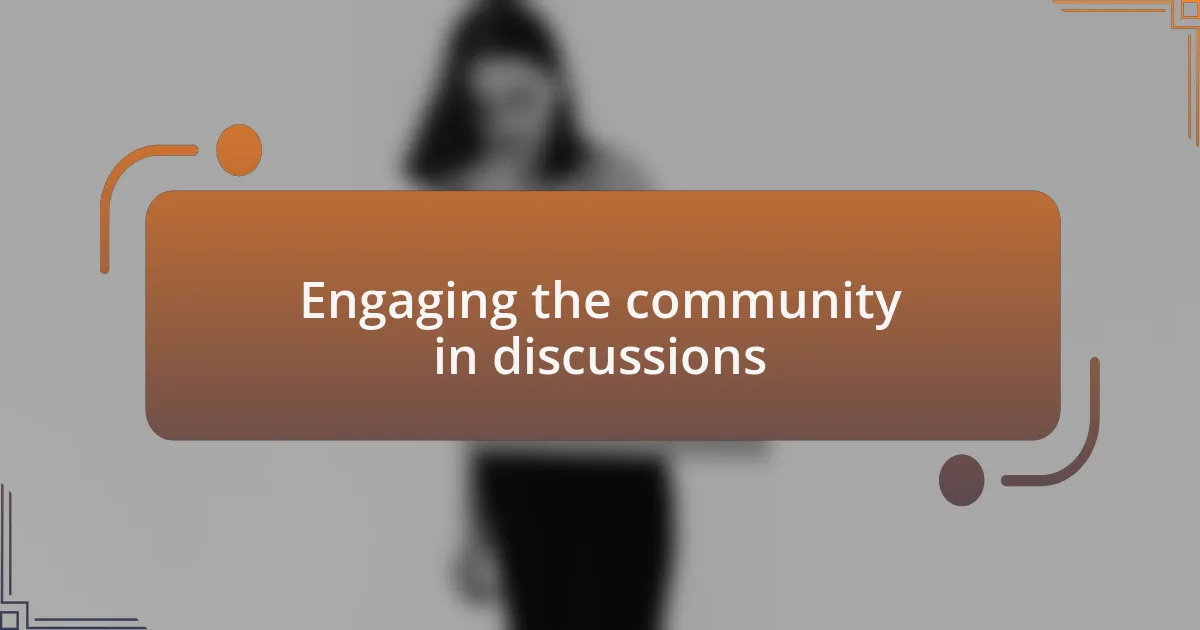
Engaging the community in discussions
Engaging the community in discussions requires creating spaces where everyone feels comfortable sharing their thoughts. I remember attending a local coffee gathering focused on pro-life issues, where we talked openly about our diverse perspectives. It struck me how, in that relaxed setting, participants became more vulnerable and willing to express their beliefs. Have you ever noticed how a casual atmosphere can lead to deeper connections?
Another approach that has worked for me is organizing workshops that invite participation from community members. I hosted one where we encouraged attendees to draft letters to local representatives about pro-life advocacy. It was inspiring to see individuals, who had never spoken out before, find their voices through writing. Don’t you think that providing practical tools empowers others to take action?
In my experience, using social media to foster discussion can also bridge gaps in community engagement. I once initiated a Facebook group dedicated to sharing experiences and questions about pro-life advocacy. The interaction was incredible; people shared personal stories that sparked thoughtful debates. Why not consider the online platforms already in use? They can transform passive browsing into active conversations, helping participants feel connected even from a distance.
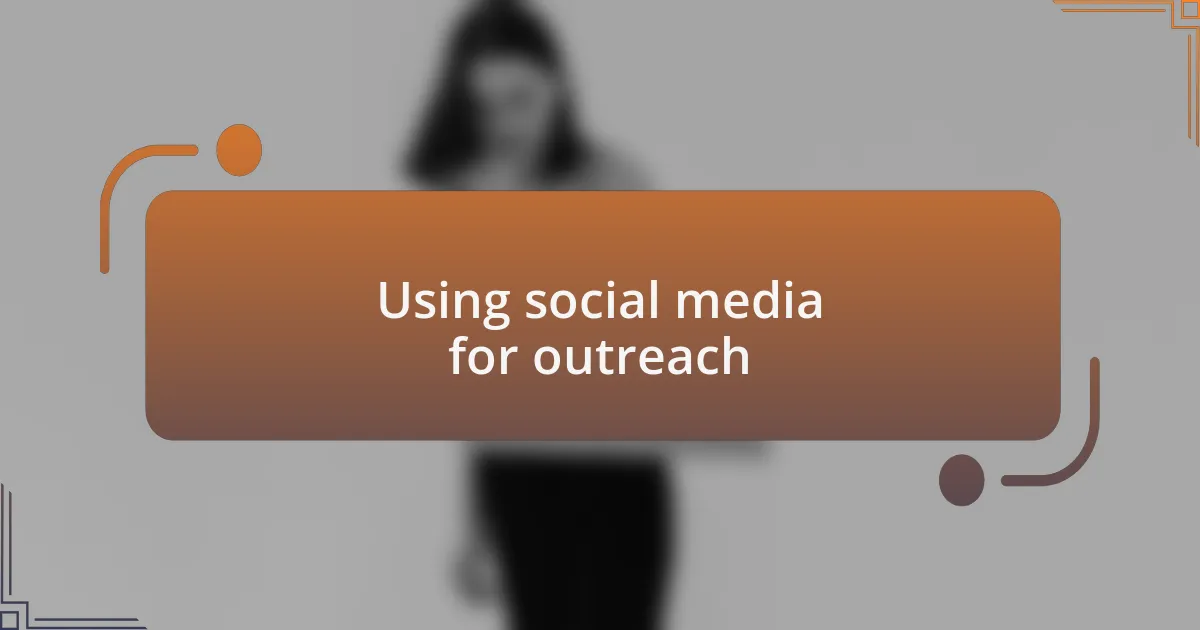
Using social media for outreach
Utilizing social media for outreach is an incredibly effective method to reach a broader audience. I remember my first campaign on Instagram, where I shared stories and images that highlighted the importance of the pro-life movement. The feedback was overwhelming; it was heartwarming to see how quickly individuals rallied around relatable content, sparking conversations and support in places I hadn’t anticipated. Have you experienced how visual storytelling can evoke strong emotions and drive engagement?
Platforms like Twitter and Facebook also allow for real-time discussions that can amplify our message. I once participated in a live Q&A session on Twitter, addressing questions from concerned individuals about pro-life issues and our advocacy efforts. The instant feedback made me feel connected to a larger community eager for transparent dialogue. Isn’t it amazing how digital platforms can facilitate immediate exchanges that might have taken much longer in a traditional setting?
Moreover, creating shareable content, such as infographics or short videos, can enhance outreach efforts significantly. I developed an infographic that outlined key statistics related to the pro-life movement, which went viral within my network. It’s fascinating how a simple image can communicate complex ideas in a digestible format, encouraging followers to share with their peers. What tactics have you found effective in making your message resonate on social media?
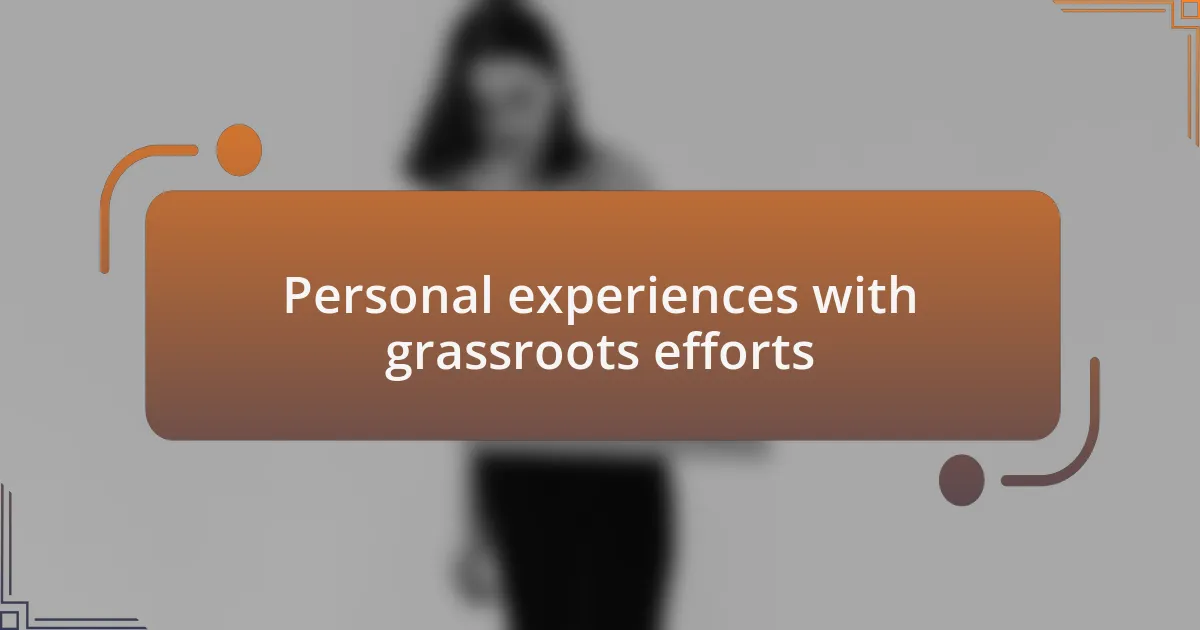
Personal experiences with grassroots efforts
I’ve often found that grassroots efforts put us in direct contact with the community, creating meaningful connections. I participated in a local rally where individuals shared their personal stories about the impact of pro-life advocacy on their lives. Hearing their heartfelt experiences reminded me of the power of storytelling, and it strengthened my resolve to continue our efforts.
One day, a group of us organized a neighborhood canvassing initiative, knocking on doors to discuss our mission. Initially, I was nervous about approaching strangers, but what surprised me was how many people were open and eager to talk. Some even shared their own journeys, highlighting how grassroots communication can break barriers and foster understanding. Isn’t it surprising how these face-to-face interactions can change someone’s perspective?
Reflecting on my volunteer work with local organizations, I witnessed firsthand how small, dedicated teams can drive change within the community. During one campaign, we collaborated with local churches, encouraging members to engage in discussions about pro-life values. The enthusiasm and commitment I saw among people of all ages ignited a fire in me; it made me realize that every little effort counts. Have you ever felt that spark of inspiration when working closely with others towards a shared goal?